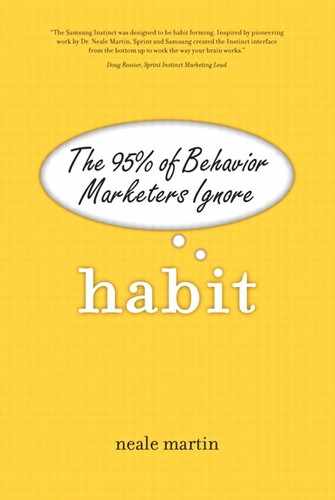Reinforcement
Behaviors are repeated because they are reinforced. This statement explains why so much of our market research has yielded poor or false results. Reinforcement is anything that makes a behavior more likely to occur, but this process is ongoing, often on an unconscious level. Reinforcement can be inherent in the purchase, such as eating an ice cream cone on a hot summer day. But reinforcers can also be friendly service, quick checkout, and the people we’re with.
The difference between reinforcement and rewards is that the former works with the habitual mind and the latter works with the executive mind. Reinforcement is the feedback mechanism that alters the firing patterns of neurons in the part of your brain that is learning unconsciously. Critical to this process is timing. A half-second delay can cause the executive mind to process a response, which can impede habitual learning.
Researchers attempting to develop an alert system to facilitate drivers’ braking response time discovered it was most effective for a warning light to be visible for between 200th and 500th of a second. If the light stayed on longer than that, the conscious mind processed the information—increasing the time it takes a drive to react.
As mentioned, using a computer mouse is intuitive because the curser tracks seemingly simultaneously with the movement of the hand. If a half-second delay occurs between the mouse moving and the cursor responding, learning is slow and frustrating.
In identifying the behaviors involved in discovery, purchase, and use, companies need to design corresponding reinforcements to guide habit formation.
Doug Rossier is a long-time client and the first manager to fully comprehend and work with me on developing a habit-based approach to product development and marketing. A long-time manager at a major wireless carrier, he was called in to discuss habits with a group responsible for loyalty. When the loyalty team explained that they were going to contact loyals (customer with three or more years uninterrupted service), they were surprised by his advice: “Don’t!” While the loyalty group had the best of intentions, contacting these customers risks elevating the repurchase decision to the executive mind. Doug recommended that the group devise a series of “cookies” that could be used as periodic reinforcers and given to the company’s best customers.
